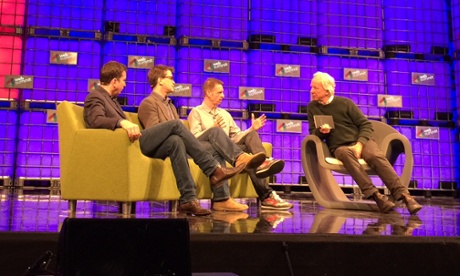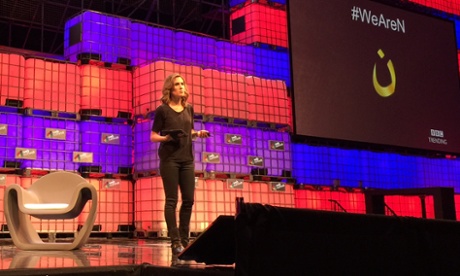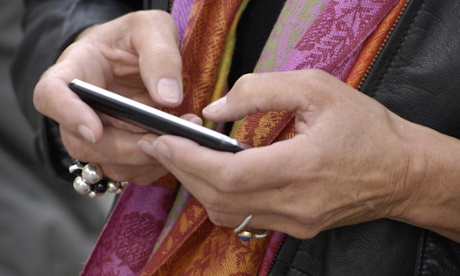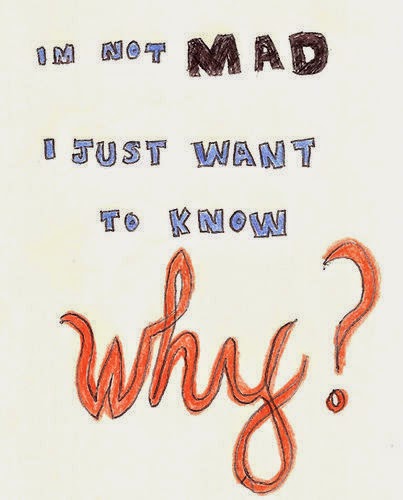Social Media: Facebook's Unbundling Worked, Tumblr and Pinterest Grow Fastest, and Could Yik Yak Be the Next Snapchat?
This week in social media was all about mobile growth and potential, as a new report shows how the major social media networks currently stack up against each other. Big surprise: Facebook is doing fine. But Tumblr and Pinterest both showed amazing growth, too.Meanwhile, Twitter announced new and possible features to turn the struggling company around. Finally, an upstart app, Yik Yak, secured funding along the lines of Snapchat, circa one year ago. Could it eventually challenge Snapchat's domination among young users?
You'll find out in this week's Social Media Saturday!
Watch our new vedio.

Facebook:
The Unbundling Strategy WorkedA 45-page report by Global Web Index came out earlier this week, as first reported by TechCrunch, and it gave a broad picture of the current state of the ongoing horserace that is the world of social media.
Obviously, Facebook remains the most popular app in the world. But Snapchat showed amazing growth in mobile, while Tumblr and Pinterest both came out on top in growth of active users.
In fact, you'd be forgiven for thinking Facebook was lagging behind in mobile growth at first blush. That's before you remember, as Quartz pointed out, that practically half the apps on Global Web Index's charts were created or are now owned by Facebook Inc. Of the top-growing social media and messaging apps for the last six months, for example, the second (Facebook Messenger), third (Instagram) and 11th (WhatsApp) are Facebook properties.
And Facebook Messenger was only barely edged out by Snapchat on that chart -- reminding us that, annoying as it may have been for users, Mark Zuckerberg's insistence that users download a separate app for Facebook messaging didn't alienate them at all. In fact, the gambit paid off nicely.
And it's not like Facebook itself is going anywhere, anytime soon. In fact, according to the most recent Sandvine mobile data analytics pointed out by Quartz, Facebook now accounts for about 20 percent of all data used by mobile phones. That's second only to YouTube, and it shows Zuckerberg's emphasis on video is also paying off.
Tumblr and Pinterest Boost Active Userbase
As mentioned, Pinterest and Tumblr (especially) surprised by leading in the growth of active userbases. As we previously reported, Pinterest has a knack for encouraging activity among their specific target audience, but in the last six months, active users more than doubled on the clipping and sharing network. On top of that, Pinterest also expanded its overall userbase by a leading 57 percent.But Tumblr came out on top of active userbase growth, increasing that all-important measure by 120 percent, while growing overall by 45 percent. Despite Yahoo's long-standing reputation of making questionable acquisitions and often leaving its new firms for the scrap heap -- with Tumblr, Marissa Mayer's got to be doing something right.
Twitter:
Another Try at Boosting CommerceReporting on Twitter has become such a downer. Wall Street just seems to hate that company, and CEO Dick Costolo's attempts to please investors with staffing changes, new features, and Facebookization is tearing Twitter apart.
This week, Twitter announced yet another attempt to boost its bottom line: Twitter Offers. The program is aimed at marketers who buy Promoted Tweets, and like the "Buy" button, it allows them to add discount coupons right inside the tweet.
Users looking to take advantage of a Twitter Offer can click on it, and if their Twitter account is linked to their debit or credit card, the discount will be applied automatically to the user's next credit card statement after they make a purchase at the real-world brick-and-mortar merchant.
According to The New York Times report, Twitter Offers can even be time-sensitive, adding urgency to follow up on impulse-clicked discount offers. And Twitter hopes it will be another way to show marketers instant engagement and return-on-investment, boosting commerce on the struggling social media network.
But Wired offers up good reasons why Offers might backfire, like most of Twitter's recent attempts at boosting its numbers. It all comes down to the question, "Whom is this actually convenient for?" Not Twitter users, it at least seems.
To get a discount, users must first link their credit cards with their Twitter account. Then, click on a Twitter Offer they like. Once they complete that online process, they have to go visit the same store (IRL) that's offering the discount they clicked on (or perhaps forgot they clicked on) when they were last using Twitter.
Even once they complete the in-store transaction -- being sure to remember to use the correct, linked credit card -- customers don't get an instantly applied discount. Instead, they have to wait for their credit card statement to see the savings.
Buying Justin Bieber's Selfie-driven "Shots"?
After that breakdown, compared to Twitter Offers, the rumor that the company may be in talks to acquire "Shots" -- a selfie app backed by Justin Bieber and accordingly used mostly by young women -- actually sounds like a savvy move.
As CNBC reports, "Shots" has approximately 2 million female users under 24, making it a prime candidate to possibly boost Twitter's userbase -- especially with a demographic that would also boost Twitter's marketing appeal.
Yik Yak:
Worth Six Times What It Was a Week AgoAnother challenger to Snapchat's key demographic dominance just increased its war chest and valuation by 600 percent, more or less. The anonymous locality-based messaging app Yik Yak secured $62 million in a funding found this week, according to Mashable, and a new total valuation upwards of $500 million.
Yik Yak, for anyone not currently in college who may not be familiar, is kind of like a mashup of Swarm, Whisper, and Reddit -- with an old-timey 90's web bulletin board feel. It's absolutely exploded in popularity this year on college campuses, after launching less than a year ago in late 2013.
It's also popular with high school aged kids (though they're not supposed to have access to the app), leading to a ton of shenanigans and legitimate controversies -- ranging from general mischief to malicious bullying -- already surrounding the app during its short lifespan so far.
But controversy also means buzz, and young demographics mean advertising potential. Snapchat is gaware of both of those points as it still dominates the youth demographic and continues to grow. But to put Yik Yak in perspective, this week it reached the same ballpark of venture funding and valuation that Snapchat arrived at in mid-2013. What happened soon after? A failed buyout bid from Facebook, which probably knew it'd be worth billions by now.







